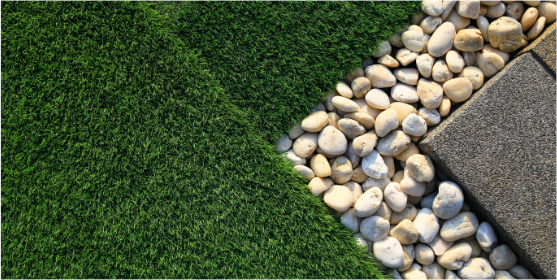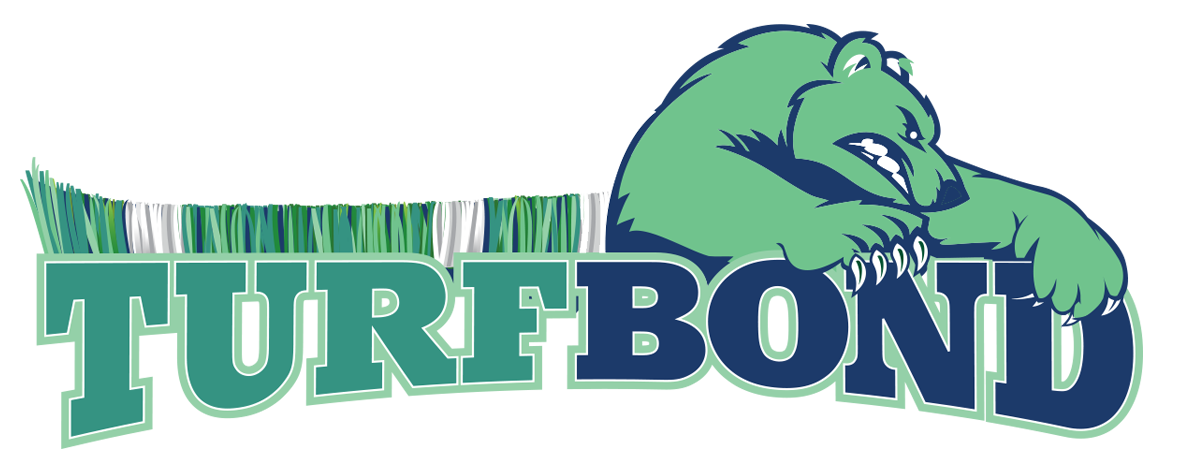Top Tips to Know When Using TURFBOND With Your Artificial Turf
TURFBOND is a single-component moisture curing adhesive for the artificial turf industry. Whether being installed in your backyard or on the field of your favorite NFL team, TURFBOND synthetic turf adhesive is designed to outlast the turf installed over it.
Following the proper procedures during installation is key to a strong, long-lasting bond. That's why we've created this TURFBOND Top Tips page with information that both the DIYer and contractor can use to ensure an install that will last for years to come.

01. Check the Weather!While TURFBOND can stand up to the toughest of weather conditions once fully cured, there are some things to look out for during installation. If you just had rain or are expecting rain, hold off your installation until it passes. The area should be dry to the touch when using TURFBOND to install your artificial turf. Also be sure to check your substrate temperatures, the ground should be above freezing (and rising) and on the other end of the temperature spectrum below 95 degrees Fahrenheit. As long as the installation begins within these temperature ranges, TURFBOND will begin the curing process and achieve a full cure even if the temperature changes overnight. 02. Prepare the Artificial TurfArtificial turf rolls are typically wrapped for transit right off the production line. These tightly packed rolls can cause tensions in the turf but are necessary for storage and transport. To relieve these uneven tensions, unroll the artificial turf and let it acclimate to the atmospheric conditions at the installation site, as per the artificial turf manufacturer’s written instructions.. 03. Recommended Installation AreasSince you can't glue artificial turf to dirt, you'll need some kind of substrate to act as the surface to which TURFBOND can adhere. Seaming tape is necessary to adhere two pieces of artificial turf over a crushed aggregate in a yard or field installation. Some examples of other good installation surfaces are: Wood underlayments, concrete, and existing cured asphalt pavement in good condition (Refer to the TurfBond TDS for a more comprehensive list of acceptable substrates). Generally speaking, the surface should be structurally sound, stable, and smooth to achieve the best adhesion possible. If you have a surface you are unsure about, please reach out to us with any questions. 04. Make Sure the Application Surface is CleanDirt has a way of getting everywhere, especially when you are working outdoors, so you need to make sure that the surface you are applying TURFBOND to is as clean as you can make it. You need as much clean surface area as possible to guarantee a long lasting bond. Be sure to clean away all surface contaminants that may be present on your substrate, like dust, dirt, oil, grease, paint, etc. 05. No Need to MixTURFBOND synthetic turf adhesive is a single-part adhesive. That means you do not need to mix it with other components from other containers, such as you would with a 2-part epoxy. Once you lift the lid It is ready to spread immediately onto your prepped substrate. |
06. Apply TURFBOND to the SubstrateUsing a properly notched trowel, apply TURFBOND to the substrate surface. TURFBOND has a working time of 30 to 45 minutes (depending on the current temperature and humidity of the installation environment, we’ll get into that in the next tip), apply the artificial turf in sections that can be spread and covered in 30 minutes or less. Follow with installing the artificial turf, ensuring that it is laid flat to the substrate. 07. Application Times VaryTURFBOND has zero flash time, which means you can spread the adhesive and lay your turf on top immediately. BUT the working time and cure/set time are all influenced by the ambient temperature and humidity. If you are working with TURFBOND on an especially hot and humid day, you will have a shortened working time and faster cure time. Conversely, if it is cold and the humidity is low you will have a longer working and cure time. 08. Confirm Adhesive TransferTo ensure that TURFBOND is properly and consistently transferring to both the substrate and the artificial turf backing, you should periodically lift the turf within the working time and visually confirm that both sides have full spread adhesive transfer. 09. Use Weight to Ensure Properly Bonded SeamsWherever TURFBOND has been applied to the artificial turf should be rolled with a weighted roller. It's also a good idea to place weights on the edges and seams to ensure that both are well bonded to the surface. This again will help ensure the strongest, longest lasting bond possible. 10. Protect the Surface Area During CuringOnce the artificial turf has been installed, protect the area from water and light traffic for at least 12 hours. You will also want to protect the area from heavy traffic for at least 24 hours after installation. After that point, the TURFBOND will be fully set - provided all the above tips were followed - and you can begin to use the artificial turf surface as intended.  |
TURFBOND Is a Great Adhesive That Yields Great Results
When you choose to use TURFBOND synthetic turf adhesive, you're on your way to world-class results. Use these TURFBOND Top Tips to help make your next turf installation as quick and easy as possible. If you would like to receive more information or place an order, please don't hesitate to contact us, and we'll be happy to help.
